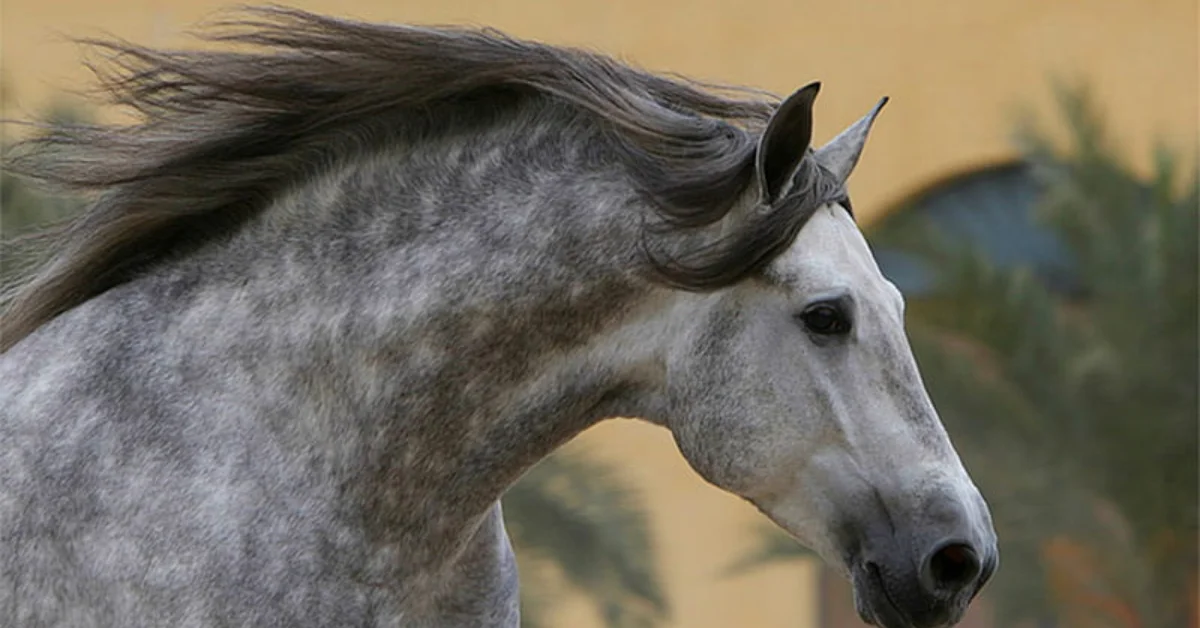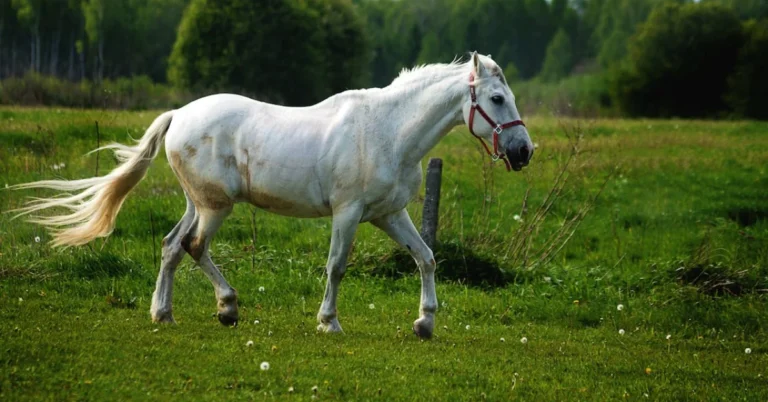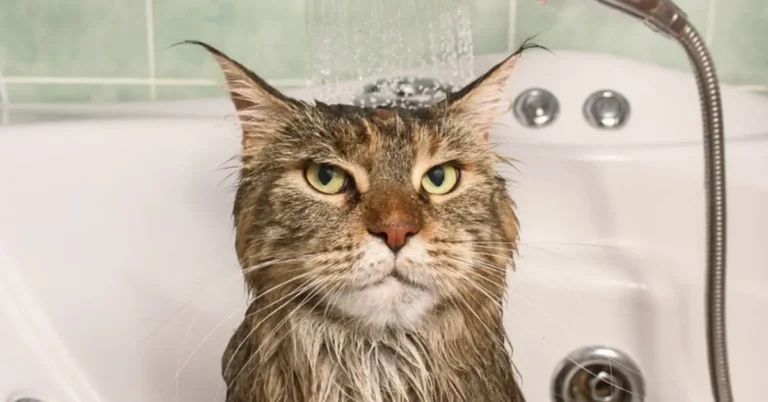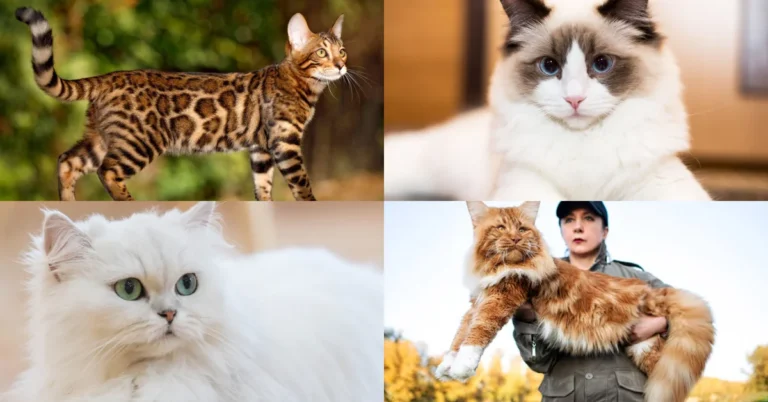Amid a sea of chestnuts, bays, and solid greys gazes an ethereal creature with a coat unlike any other. Shimmering patterns swirl across its hair like moonlit waves crashing under a midnight sky. This is the dapple grey horse in all its mystical splendor. Neither defined by a single color nor boasting a uniform appearance, the dapple grey horse presents an ever-changing tapestry of light and dark that captures the imagination with its visual poetry. Weaving between the known and unknown, these horses inhabit a liminal space between myths and reality.
To better understand the true nature of these spellbinding equines, let us embark on an odyssey traversing ten compelling facets of dapple greys. From ancestry shrouded in prehistoric caves to modern management considerations, fascinating insights, and questions reveal the unique essence of these horses. By exploring the rare genetics, shifting color transformations, and breed predilections intermixing to create their aesthetic allure, the profound wonder of dapples unfolds through both science and lore.
The Dapple Grey Genesis: A Mystery Written in the Genes

While a recessive variation of the Gray gene (spelled with an “a” to differentiate) provides the foundation for a dapple grey coat, the emergence of their trademark patchwork appearance remains largely enigmatic even to equine geneticists. Unlike some coat patterns traced to single genes, dappling arises from complex interactions between the Gray locus and other unidentified modifiers. These instigate uneven pigment loss as dark juvenile hairs mingle with emerging white hairs. Environmental factors like sun exposure may also influence distribution patterns during crucial developmental phases. This tangled genetic and external cocktail stirs up the magical dapple concoction.
Thus, the ingredients for the origin of each horse’s distinctive dapple brand await further elucidation. No perfect formula guarantees the occurrence, degree, or longevity of dappling. Even full siblings with identical Gray genotypes often sport wildly unique patterns. So while the Gray gene lights the initial spark, the spiral into the dapple grey mystique follows less defined laws, retaining its semi-feral spirit.
A Metamorphosis of Color: The Making of a Dapple Grey

Unlike some coat colors evident from birth, the life of a dapple grey unspools in phases, beginning with a dark juvenile coat. As the greying mechanism activates, light hairs gradually emerge, creating striking Juxtapositions with the darker backdrop. Most foals sport bay, black, or chestnut base colors, though any equine coat shade can transform into the frosted dapple lattice-work. During this stuttered shift lies the peak of their visual spectacle—a rich intermingling of black and white reminiscent of Cruella de Vil. However, this dazzling display remains ephemeral as pigment depletion continues until only faint or absent ground color remains. Thus, dapple greys shine as masters of metamorphosis, adopting chameleon coats that change with passing seasons. Their beauty lives within the liminal timeline between dark and light.
Some dapples transition so rapidly they skip the adolescence dappling phase entirely, while others nearly stop mid-metamorphosis, retaining darker underlying bay or brown hues among the greying frost. And all eventually culminate as striking yet more subtle “white” horses, some fading faster horse than others before reaching 20 years old. Within these diverse trajectories, the lifespan of dapple feathering across the Grey gene landscape takes many forms, blurring boundaries.
True Greys Revealed: Separating Dapples From Fleabitten Imposters

In aesthetic company alongside dapple greys reside their kissing cousins—flea-bitten greys. At a glance, they offer similar speckled facades. However subtle distinguishing features help verify true dapple grey status. As their monikers suggest, dapples present signature larger patches creating big blotches. Their shapes may swell circular-like droplets or bloom into irregular bursts resembling stars or butterfly wings. Meanwhile fleabitten speckling scatters more evenly in smaller pin-pricks earning the blood-sucking parasite reference. Dapples also tend to localize along the horse’s back, neck, and shoulders contrasting concentrated fleabitten freckling on the flank and hips where insects might aim bites.
In rare instances, horses may even manifest both dapple and fleabitten patterning if carrying additional genetic modifiers. And some seemingly solo fleabitten coats suddenly sputter into dappling if molting poorly due to illness or stress. So while the two traits hold differences detectable upon close inspection, their potential to intermingle further deepens the mystery of fragmented greying and spotting unique to the grey color sphere.
Origins & History: When Did Dapple Greys First Appear?
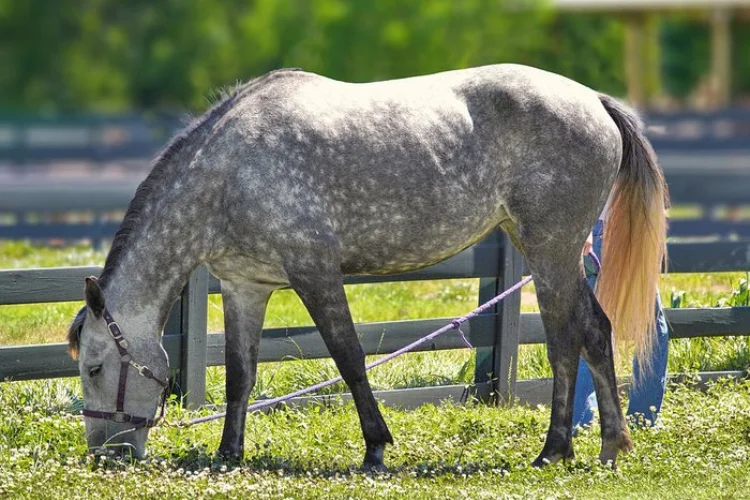
The dappling phenomenon appears sprinkled across diverse horse breeds today, but when viewing their ancestral timelines, pinpointing the initial duotone spotted birth proves difficult. However, archaeologists discovered dapple-patterned horses depicted in prehistoric cave paintings dating back 25,000 years ago in France and Spain. Ancient Asian art and European historical references also sketch dappled steeds suggesting the ongoing presence of the variant graying process. Selective breeding propagating preferred traits likely concentrated the allele’s manifestation and visibility.
As lightweight horse varieties transformed into medieval war horses in Europe and Asia over several thousand years ago, the newly solid, muscular animals displayed higher rates of dapples and fleabitten speckling compared to their less selectively managed ancestors. Dapple enhancement may have even proved a goal in the progeny of colored war stallions. So while genesis remains unknown, the dapple grey seemingly rippled as a consistent vein running through the equine genetic landscape across history, perpetuated by human hands which continued to cherish their splendor through modern times.
Breed Propensity: Where Dapples Most Congregate

Given the spontaneous factors influencing dapple distribution even among genetically predisposed horses, pinpointing exact breed probabilities proves slippery. However notable inclinations arise, with certain breed lineages boasting signature styles of dapple dressings. Ethereal Andalusians, robust Percherons, and lithe Arabs all frequently bear ornate dapple coats ranging from stark high contrast to subtle shading. Oldenburgs and Hanoverians commonly adopt the dapple mantle within warmblood sport lines.
Among other less expected dapple dens rests the Appaloosa Sport horse, which uniquely overlays varnished light dappling on darker leopard spotted or striped coats if also carrying single Gray alleles. Their pattern-on-pattern aesthetic gorgeously embodies the multifaceted splendor of dapple grey fusion with other equine paintbrushes. Particular Appaloosa bloodlines like the Knabstrupper breed almost guarantee both leopard spotting and dapple frosting accouterments. The synergy of combining two rare coat motifs sparkles as the epitome of equine eye candy.
Personality & Performance: Beyond Dapple Beauty

Beneath their visually hypnotic facades, dapple grey horses reveal versatile talents and dispositions elevating them beyond merely photogenic status. Their dappling may capture initial infatuation, but sterling temperaments and athletic potential secure their veneration. Many bloodlines are renowned for producing affable, people-oriented horses like Arabians and Quarter Horses frequently birth dapples within their gentle populations. Additionally, the preponderance of dapples within famously hardy work breeds like Percherons and Belgian Draft horses hints at high stamina.
In sporting spheres, dapple grey Arabians, Andalusians, and Thoroughbreds dominate disciplines requiring agility like show jumping or dressage, while also thriving in racing and long-distance endurance competitions. This flexibility coupled with trainability and eagerness to bond with handlers culminates in excellent all-purpose and recreational riding horses outside strict competition contexts, too. Form and function meld beautifully.
Cultural Significance: Lucky Symbols with Regal Standing

Beyond sensational aesthetic and performance traits cementing their popularity, dapple greys enjoy elevated cultural status, as well. Associated with prosperity, spiritual purity, and the actualization of potential, they earn special significance in numerology and symbolism across diverse societies. In Celtic lore, the dapple grey emerges as a sacred spirit messenger bridging worlds. Buddhism and Hinduism revere the dappled horse as a holy creature presaging dawn’s first light bleeding into darkness. Even in dream interpretation, riding or owning grey-white horses signals power, prestige, and the actualization of ambitions.
Physically oozing with opulence from pearlescent coats to flowing manes and tails, dapple grey readily embodies nobility, Mercedes, divine favor, and other lofty associations. Queens rode silvery steeds, while mythology depicts divinities swooping down on pale stallions with manes of clouds and tails of lashing lightning. Across most cultures, no other singular color enjoys such universal acclaim. Thus, the dapple grey rightfully reigns supreme in both literal and symbolic esteem even today.
Specialized Care Needs: Grooming a Glimmering Coat

Befitting any princely status, dapple grey horses warrant a customized management approach optimizing their health and radiance. Their pigment-devoid skin and hair are uniquely prone to sun damage and temperature extremes necessitate vigilant protection measures.
Additionally, meticulous grooming proves paramount for maintaining the glimmering dapple glow. Daily currying sweeps away dust and dirt particles prone to embed within light coats left unpacked. Mild soap-based shampoos also enhance shine and remove stain-causing residue without over-drying sensitive skin. And while pale hair appears nearly spotless, tiny dark hairs shed by dapples easily attract notice, demanding diligent removal. Checking for extended white hairs also allows timely trimming to prevent excessive length on this stealthy hair.
With extra grooming attention, hydrating rinses, and nurturing hands respecting delicate skin, the dapple’s crystalline coating continues casting a luminous veil true to equine eye candy status. Beyond daily care, additional adjusted management considerations from sunshade blankets to dietary pigment supplements further ensure the longevity of vibrant dapple sparkle into advanced age even as greying progresses.
Psychology of Dapples: Understanding Their Alluring Mystique
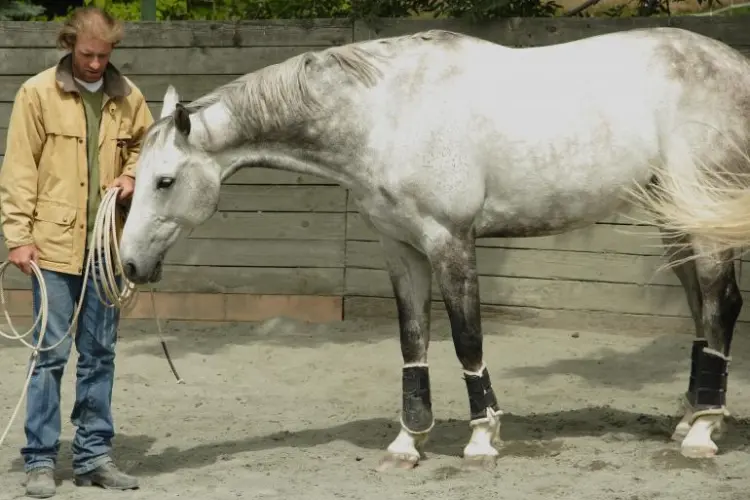
Given the extensive extra duties dapple grey horse care demands, what fuels our collective fervor in granting coveted status to these horses as lifelong companion prospects? The phenomenon lies rooted in both scientific fact and emotional allure. Objectively, research confirms visual fascination and positive associations triggered upon viewing their rare shifting pigmentation. Additionally, their large soft contemplative eyes channel innocence and vulnerability amplifying caregiver bonding hormones that translate across species.
Subjectively, the semi-random patchwork synthesis dapples model may subconsciously mimic cellular processes in our skin, touching upon identity and aging. Human skin equally depends on genes, environment, and chance creating unique pigment variation. Viewing comparable epigenetic patterns mirrored in equine “freckles” sparks kinship and empathy. Beyond scientific basis, people simply declare greater affection for spotted creatures across contexts, fueling dapple popularity. Ultimately, our attraction to dapple grey horses transcends understanding, shrouded in the same mystical beauty that first sparked beguilement.
Bonds Without Borders: Connecting Across Coat Colors

When unveiling the profound charm exuded by dapple-coated horses, language barriers arise conveying their essence. No singular color class defines their chameleon aesthetic, and traditional typecasts of refined yet bold or hardy yet gentle scratch only at surface personality traits beholden less to coat and more to lineage and handling. Just as star and moonbeam motifs grace celestial bodies without capturing their cosmic complexity, words never stretch enough to imprison the scope of any horse within narrow stereotypes or simplified summaries.
Each equine soul gallops a unique journey along their genetic timeline, environment, and human relationships further influencing their growth. Coat patterns supply mere facade decoration, not identity. True connection springs from quality time and care bound by trust on both sides, not appearances. Thus, while the mesmerizing splendor of the dapple grey always elicits admiration, they share common ground with all horses. Only mutual understanding and compassionate communication can bridge the true divide between species to reveal the common golden spirit shining below any hair depth variation.
Final Thoughts
Ambling across the boundaries of science and myth, dapple grey horses frolic in a liminal land between symbolism and substance. Traversing known genetic roots intertwined with untamed variables yields striking creatures resisting conformity with other equine shades or stereotypes beyond a shared mystically beautiful rarity. Reveling in the artistry of their marbled coats feels akin to embracing the unknowable beauty of existence itself surging with vitality yet shrouded in uncertainty.
Just as the distant stars and galaxies showcase nature’s wild diversity expressed at astronomical scales, dapple horses miniaturize such marvels into tangible creatures both awing and inspiring with their uniqueness. They send a message urging devotion to conserving the unconventional. For within the rarest blooms often hide the most precious gifts. By honoring these horses, we honor the profound splendor inherent in variation itself across all living art. May the glimmering glory of the dapple grey never fade.

